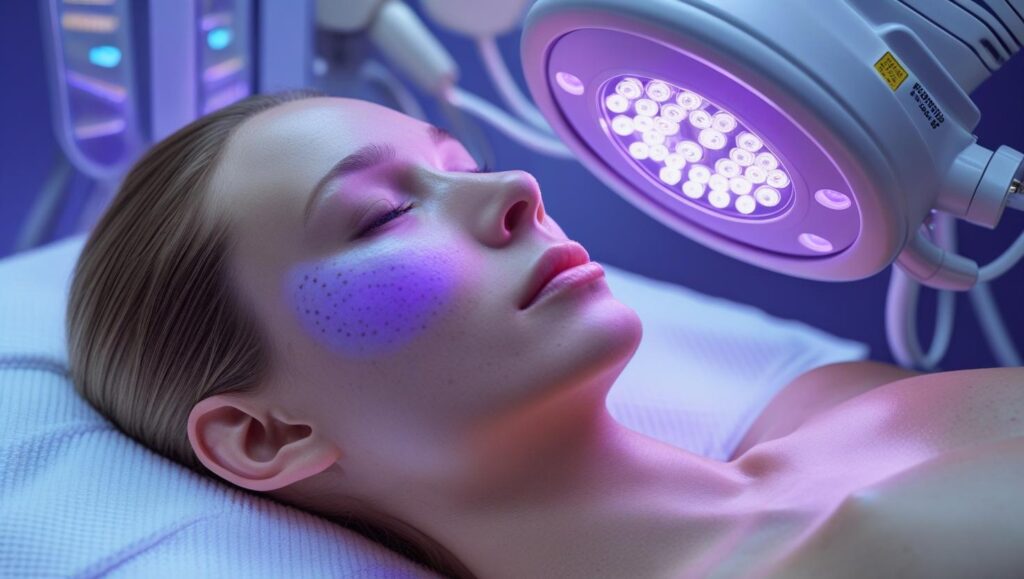
1. Introduction to Ultraviolet Light
Ultraviolet (UV) light is a form of electromagnetic radiation with wavelengths ranging from 10 nm to 400 nm, situated between X-rays and visible light in the electromagnetic spectrum. UV light is categorized into three main types based on wavelength and biological effects:
- UVA (315–400 nm): Long-wave UV, penetrates deep into the skin, associated with aging and indirect DNA damage.
- UVB (280–315 nm): Medium-wave UV, responsible for sunburn and direct DNA damage, used in phototherapy.
- UVC (100–280 nm): Short-wave UV, germicidal but mostly absorbed by the ozone layer; used for sterilization.
UV light has been harnessed for medical applications due to its ability to modulate immune responses, kill pathogens, and treat skin disorders.
2. History of Ultraviolet Light in Medicine
The therapeutic use of UV light dates back to ancient civilizations, where sunlight was used to treat skin conditions. Modern UV therapy began with the following milestones:
- Late 19th Century: Niels Finsen pioneered UV therapy for lupus vulgaris (tuberculosis of the skin), earning the 1903 Nobel Prize.
- Early 20th Century: UV lamps were developed for treating rickets (vitamin D deficiency) and infections.
- 1950s–1970s: PUVA (Psoralen + UVA) therapy was introduced for psoriasis and vitiligo.
- 1980s–2000s: Narrowband UVB (311 nm) replaced broadband UVB
Here’s the continuation of the article, covering the remaining sections in detail.
3. Safety and Side Effects of UV Therapy
While ultraviolet (UV) therapy is highly effective for various medical conditions, it is not without risks. Understanding these risks helps clinicians optimize treatment while minimizing adverse effects.
Acute Side Effects
- Erythema (Skin Redness):
- Similar to sunburn, caused by excessive UVB exposure.
- Managed by adjusting dosage and using emollients.
- Pruritus (Itching):
- Common in PUVA and UVB therapy.
- Alleviated with moisturizers and antihistamines.
- Blisters and Burns:
- Rare with controlled dosing but possible with overexposure.
Chronic Side Effects
- Photoaging:
- UVA penetrates deeply, causing wrinkles and loss of skin elasticity.
- Cataracts and Eye Damage:
- UV exposure increases the risk of ocular damage.
- Prevented with UV-blocking goggles during therapy.
- Skin Cancer Risk:
- Long-term PUVA increases squamous cell carcinoma (SCC) risk.
- NB-UVB has a lower carcinogenic profile.
Risk Mitigation Strategies
- Strict Dosimetry: Personalized dosing based on skin type (Fitzpatrick scale).
- Protective Measures: Eye protection, sunscreen on unaffected areas.
- Regular Skin Checks: Early detection of precancerous lesions.
4. Future Directions in UV Therapy
The field of UV therapy is rapidly evolving, with several groundbreaking advancements on the horizon.
1. Far-UVC for Infection Control
- Concept: Far-UVC (207–222 nm) kills pathogens without harming human skin.
- Applications:
- Hospital Disinfection: Continuous air sterilization in ICUs.
- Public Spaces: Far-UVC lamps in airports and schools to reduce viral transmission (e.g., COVID-19).
2. Nanoparticle-Enhanced UV Therapy
- Mechanism: Titanium dioxide (TiO₂) and zinc oxide (ZnO) nanoparticles amplify UV effects.
- Potential Uses:
- Deeper Penetration: Treating thick psoriatic plaques.
- Targeted Drug Delivery: UV-activated nanoparticles for localized treatment.
3. Gene Therapy Combined with UV
- Vitiligo Treatment:
- Gene-editing tools (CRISPR) may restore melanocyte function.
- UV exposure could stimulate repigmentation post-gene therapy.
4. AI-Driven Personalized Phototherapy
- Smart Algorithms:
- Analyze skin response in real-time using imaging sensors.
- Adjust UV dosage automatically for optimal results.
- Wearable UV Monitors:
- Track UV exposure and sync with treatment protocols.
5. UV-Responsive Biomaterials
- Wound Healing:
- UV-activated hydrogels for controlled drug release.
- Post-Surgical Sterilization:
- UVC-coated sutures to prevent infections.
5. Conclusion
Ultraviolet light has transformed medical therapy from ancient heliotherapy to modern, precision-based treatments. Key milestones include:
- Historical Breakthroughs: Finsen’s Nobel Prize, PUVA therapy, NB-UVB.
- Current Applications: Psoriasis, vitiligo, infection control.
- Future Innovations: Far-UVC, AI-driven dosing, gene therapy integration.
While safety concerns like photoaging and skin cancer persist, advancements in targeted UV delivery, biocompatible UVC, and personalized medicine are mitigating these risks. The next decade will likely see UV therapy expand beyond dermatology into systemic immune modulation, advanced sterilization, and combination biologic treatments.
